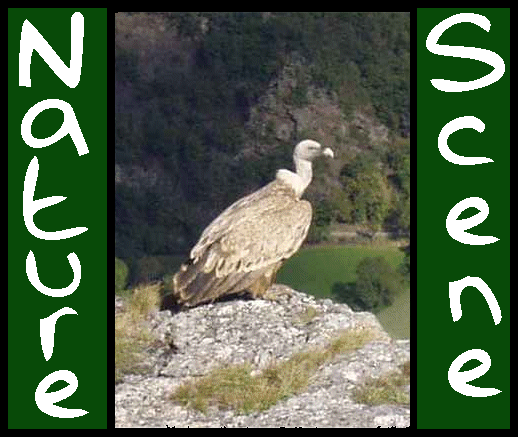
Welcome to NATURESCENE'S
BOTANY ARTICLES of the CÉVENNES
A selection of articles in French and English by David Dickenson of Naturescene, written for the official ALEPE site

|
In the Cévennes, we pass quickly from bitter cold to heatwave conditions. The spring-flowering orchids
can take a bit of snow, just, but not not those of summer. And it was summer orchids that we,
optimistic botanists as we were, had decided to track down the first Saturday of July.
Claude Vincent wanted to show off the rare Summer Lady's Tresses on the banks of the Tarn to the guys of the Société Française d’Orchidophilie (French Orchid Society) and the members of ALEPE (Lozère Nature Society). Like an idiot, I had boasted that the Lady's Tresses on the banks of the Mimente, almost next door to me, were not only more plentiful, but more attractive. To add to this stupidity, to fill in a bit of time for these orchid lovers, I had offered to show them a few species of Helliborine (Epipactis) orchids, also fairly rare. Luckily, today, virtually everything was out in flower just in time, and the river was perfect to cool off under a scorching sun. |
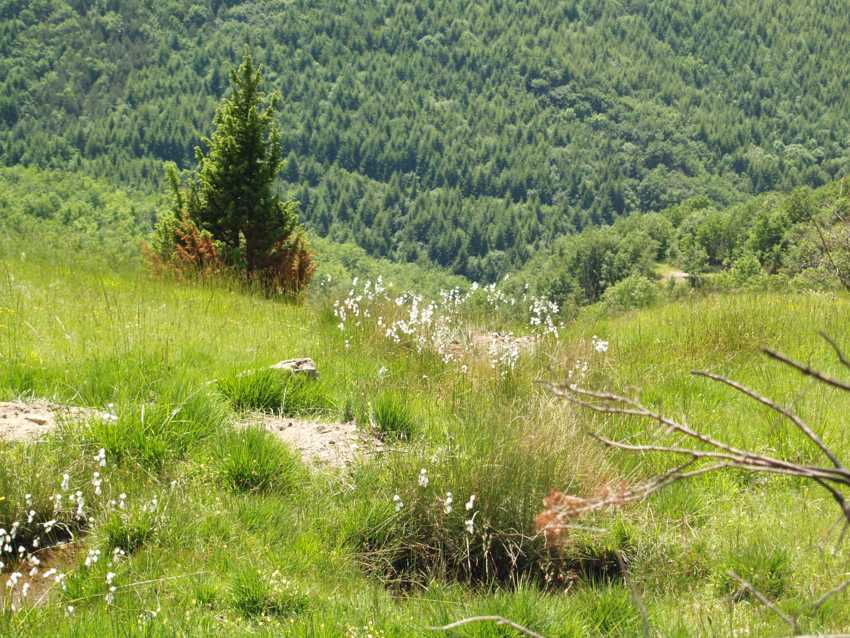
Photo 1 |
There are seven species of Epipactis in Lozère. At Hospitalet, on the Corniche des Cévennes road, we found five of them. Two years ago, I had come across a colony of Cotton Grass (Eriophorum angustifolium) (Photo1) just off the road, and told myself, super, a limestone marsh, which promises some very special plants. |
| Nothing could be more special than the Marsh Helleborine (Epipactis palustris) (Photo 2) which is to be found here, with its large flowers of shades of brown. Its speciality is a hinged lip, which is always a surprise for every insect which lands on the epichile, the name for the extremity of the lip. Uniquely in this orchid, it acts as a swing. |
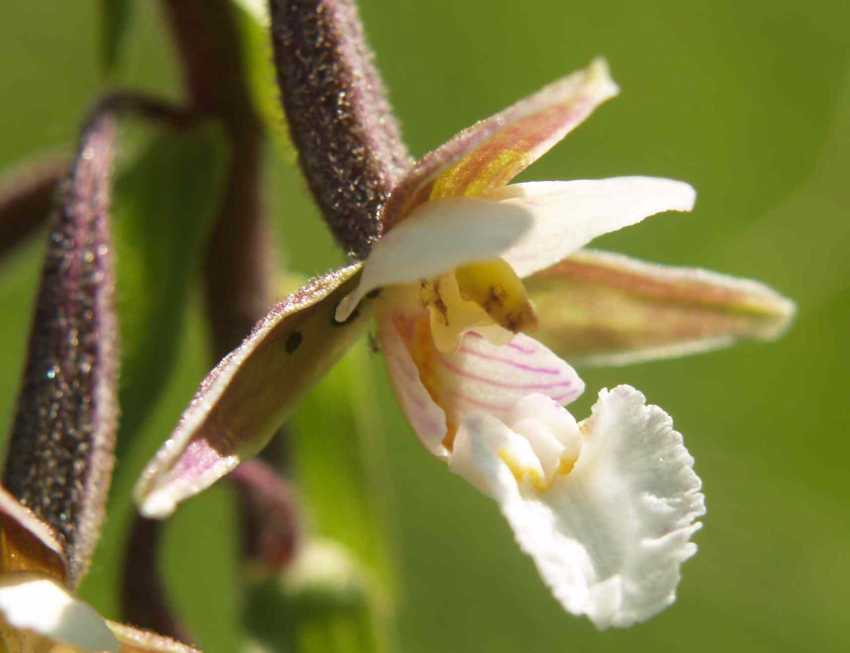
Photo 2 |
| We are very close to the dinosaurs' footprints of St Laurent de Trèves, and it was perhaps in a swampy area like this that they roamed about several million years ago. |
|
We moved on to the woodland above, centred around the little dolomitic chaos that makes up Hospitalet.
Within several minutes, we see our first Tiny-leaved Epipactis (Epipactis microphylla) (Photo 3). What a contrast! As small as the Marsh Helleborine is large, growing in a spot as shady as the other is bright, soil as dry as the other is soaking, and an epichile boasting a double chin |
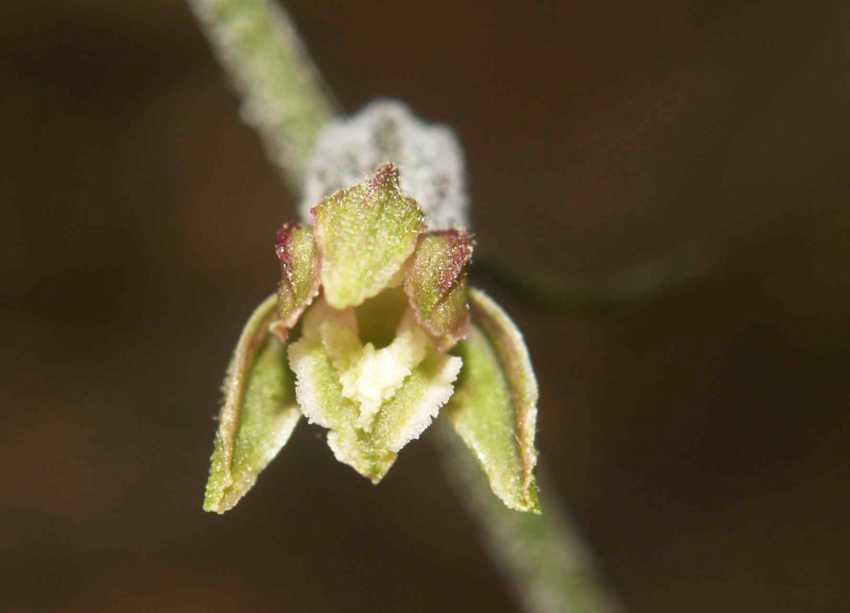
Photo 3 |
|
We came across other species of Epipactis, somewhat more common, but hardly 10-a-penny either.
At this point, our problems began. How does one identify Epipactis species when only in bud? It is not possible!
Or perhaps yes it is ......
I took several leaf margins, ready to examine them under the microscope. Would it be possible to identify them that evening under the microscope? (Photo 4). Reply in several weeks time ...... |
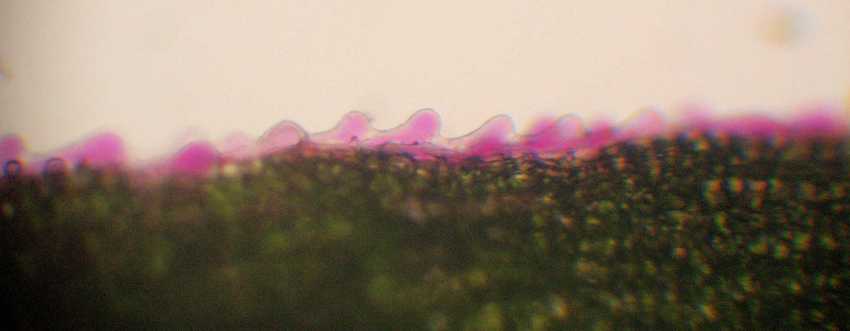
Photo 4 |
| In past years, I have see in this area E. muelleri, E. atrorubens, and E. helliborine, and those on this outing resembled these three species (and all too often, characteristics of all three on the same plant). |
| There were other plants of particular interest around these dolomitic rocks. Surrounded as I was by orchid lovers, I didn't want to spend too long on these. However, to the pleasure of all, I was able to show them a circle of rocks draped by overhanging greenery, resembling a moss. This appearance gave the name to the Mossy Sandwort (Moeheringia muscosa) (Photo 5). The tiny flowers, only 5mm across, are scattered like stars throughout the plants. It wasn't the last time I needed a hand-lens today. |
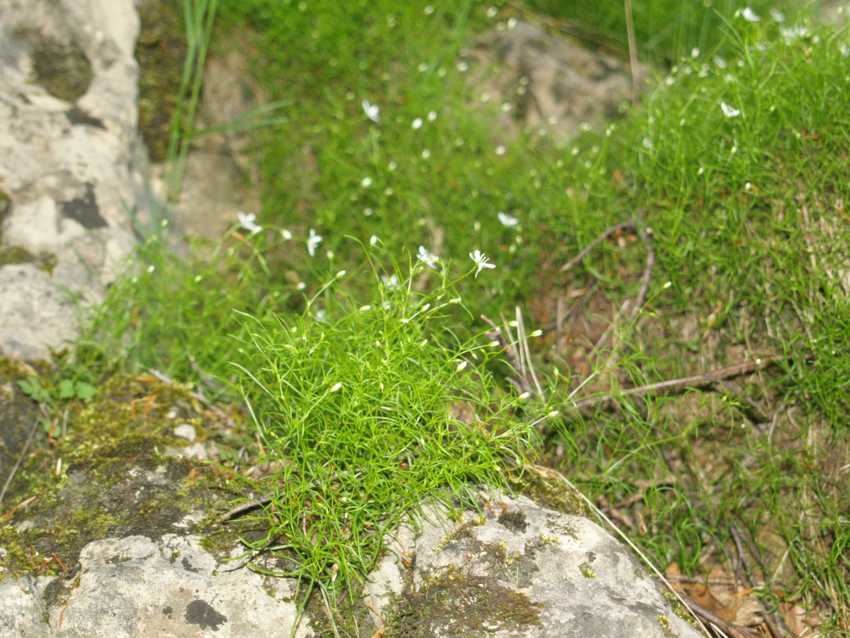
Photo 5 |
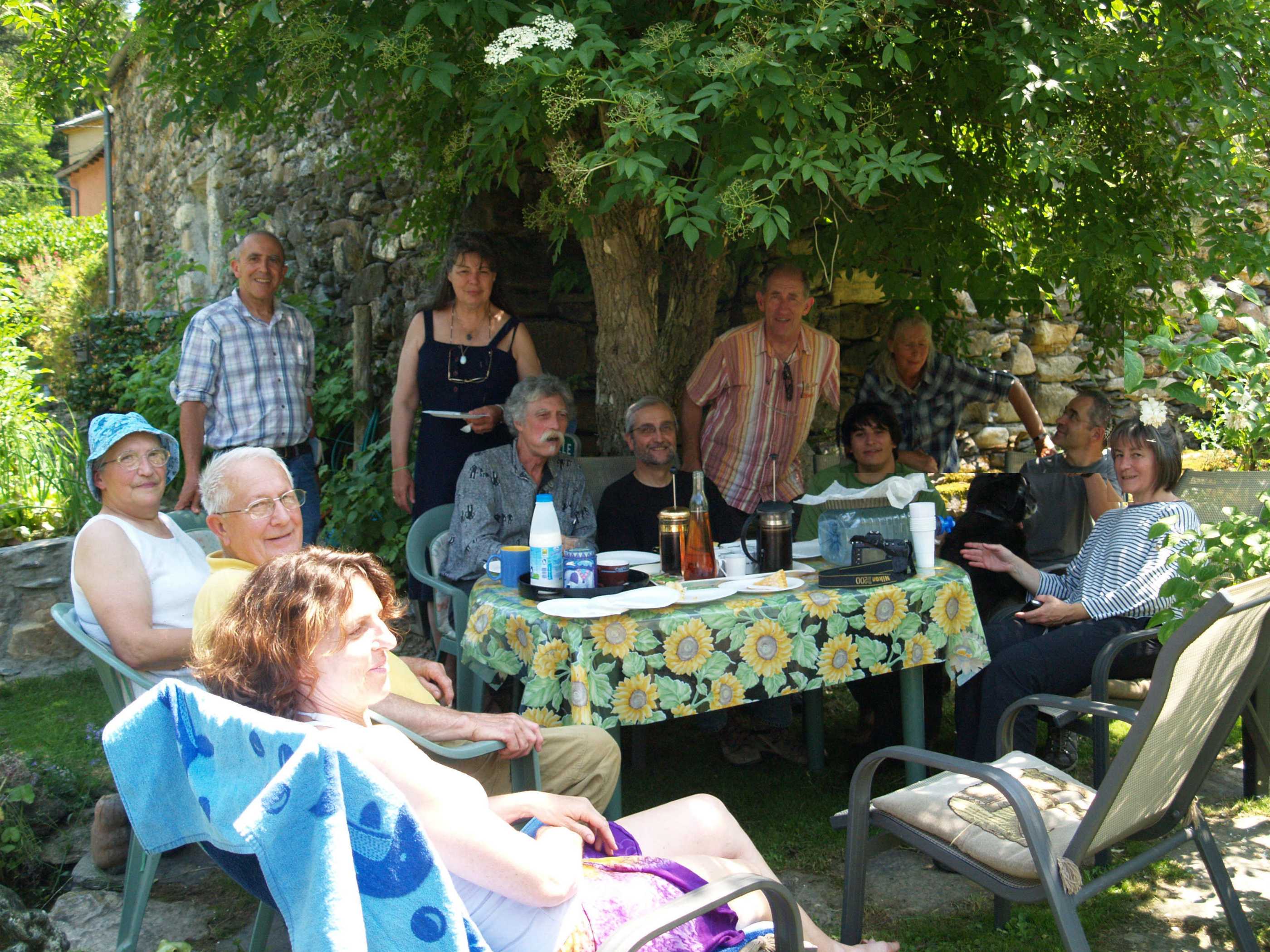
Photo 6 |
We were a select group of 12 for the morning, but were joined by two others for the picnic and swimming at mid-day
(nature was not our sole interest) (Photo 6), and our numbers exploded for the afternoon.
It was time to visit the Summer Lady's Tresses , and our party was large and varied.
The president of the regional (SFO) French Orchid Society; an author of orchid books; several orchid photographers; a few 'train spotters' keen to tick the box for this rare species of orchid; general botanists experienced in a wide range of species; and beginners finding magic in all things. Each to his own taste, and making a very friendly and welcoming group |
| The Summer Lady's Tresses (Spiranthes aestivalis) (Photo 7) is rare because of its capricious needs. It insists on an acid terrain, humid in springtime, and above all, clear of other vegetation, because it is unable to compete with aggressive competition. With a gentle rocky slope, scoured free in winter of other vegetation, the banks of the Tarn and the Mimente are ideal, and both play host to over 100 plants each. |
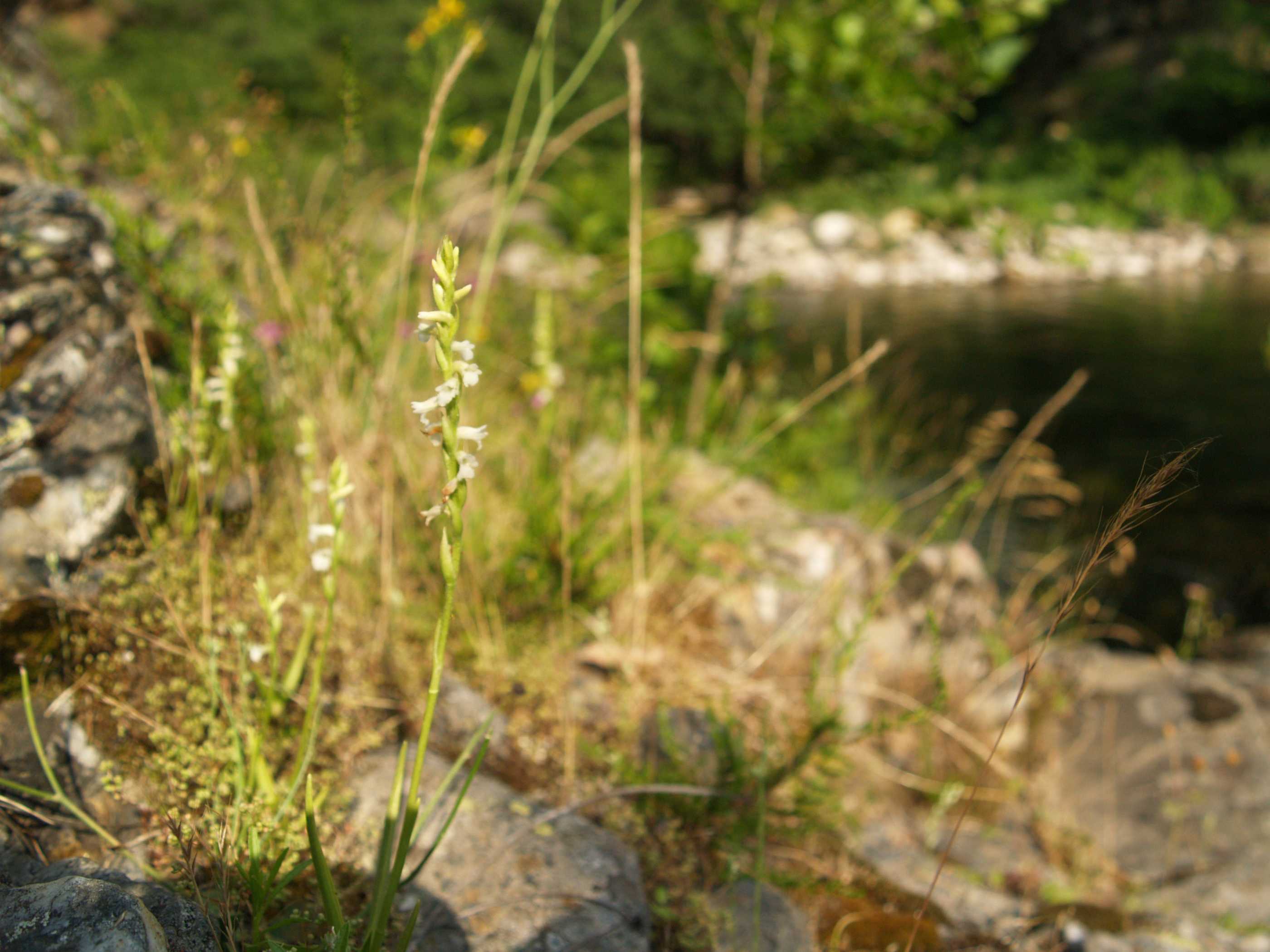
Photo 7 |
| Like all these special spots, there is a typical surrounding vegetation. In my opinion, the key indicators were:- | |||
| the 'Seaside' Centuary (Centaurium littorale) (Photo 8) (take care not to confuse with the Common Centuary (Centaurium erythrea), which is widespread in the region, including this spot), | 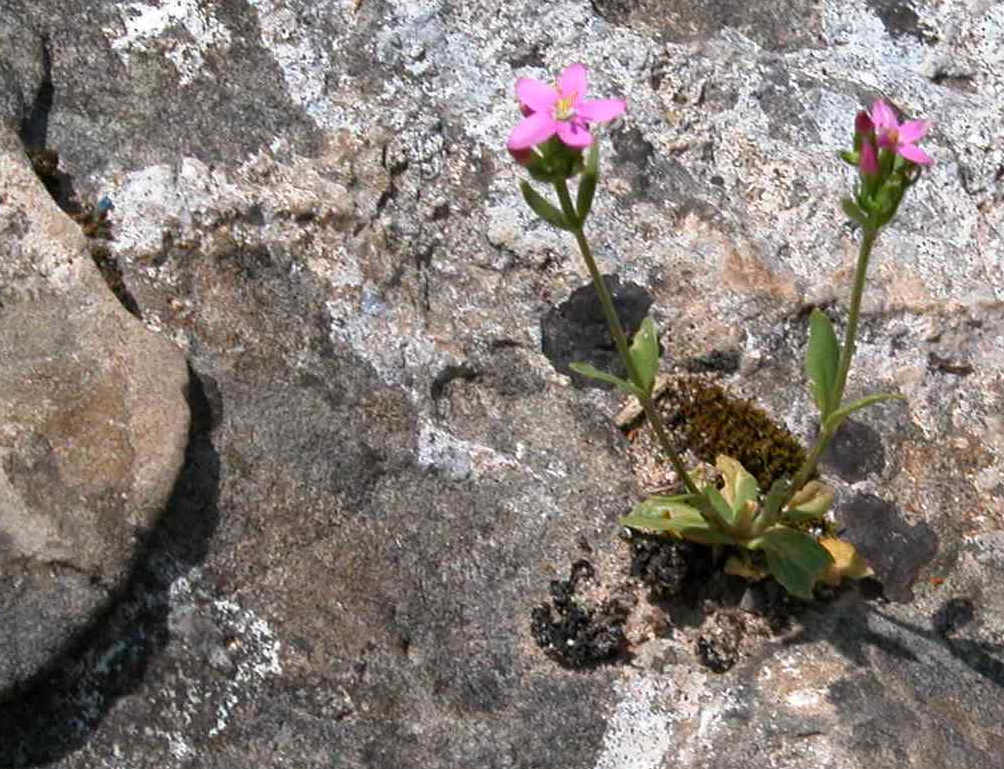
Photo 8 |
the depressing Small cudweed (Logfia minima) (photo 9), | 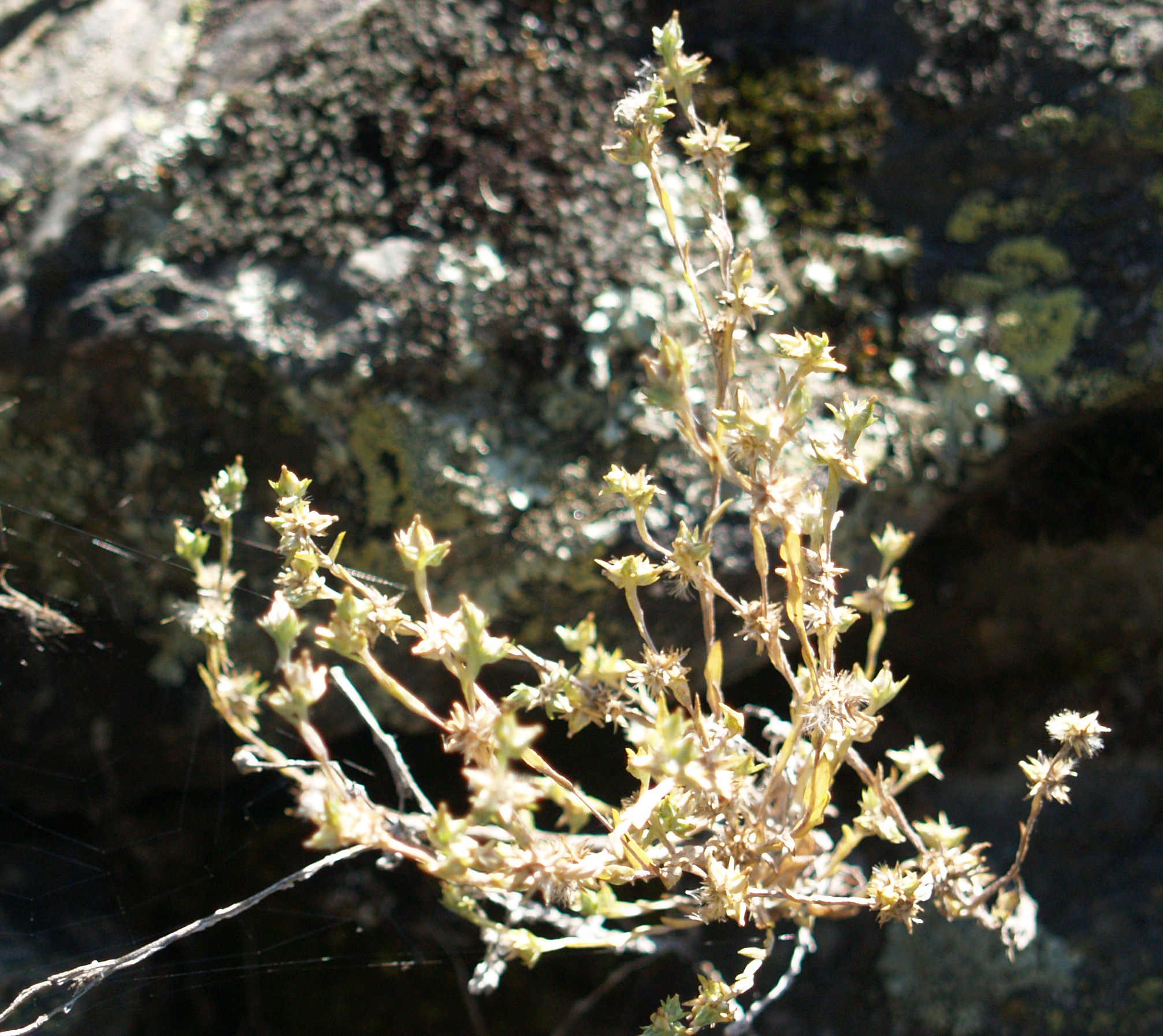
Photo 9 |
| the tasty Chives (Allium schoenoprasum) (photo 10), | 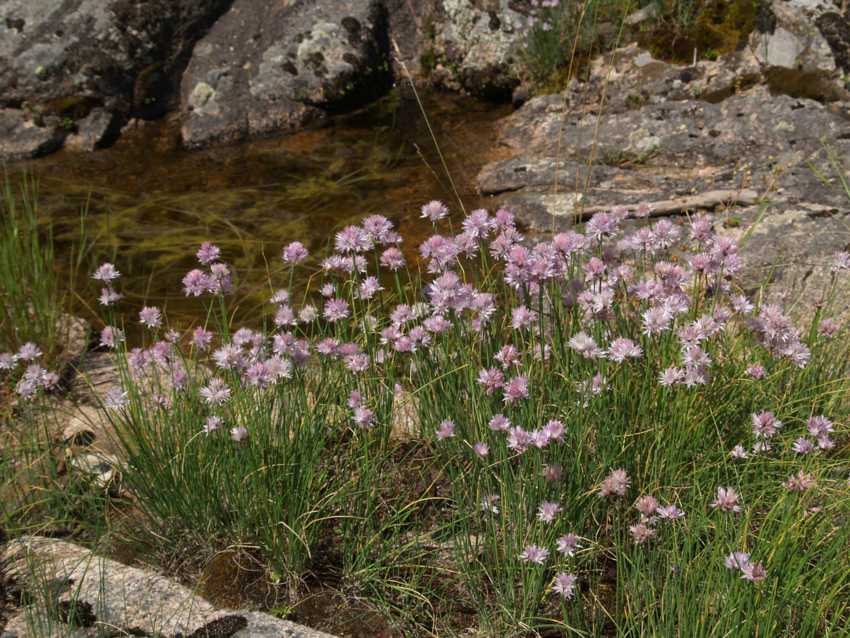
Photo 10 |
the tiny Procumbent Pearlwort (Sagina procumbens) (photo 11), | 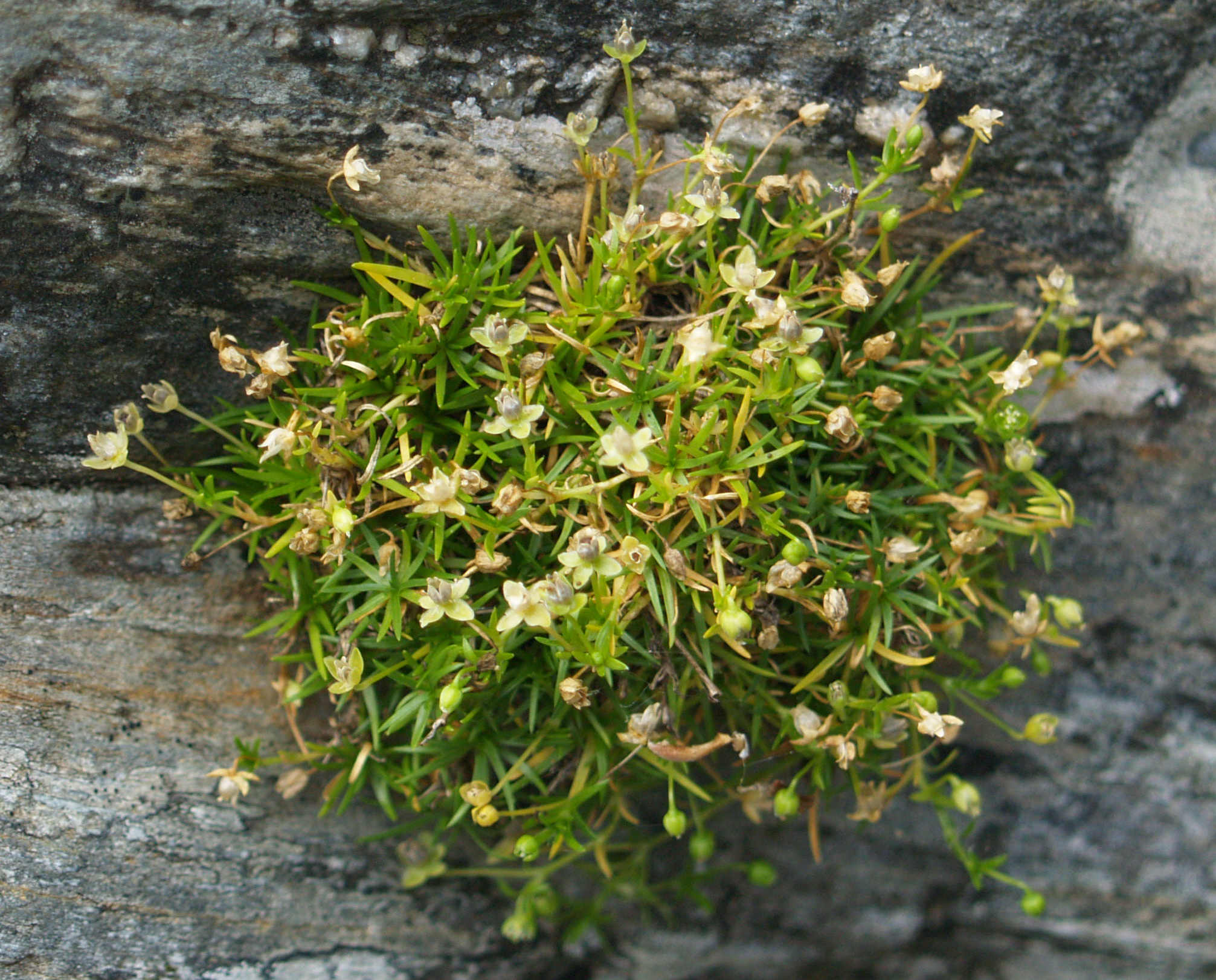
Photo 11 |
| the amusing Toad Rush (Juncus bufonius) (photo 12), | 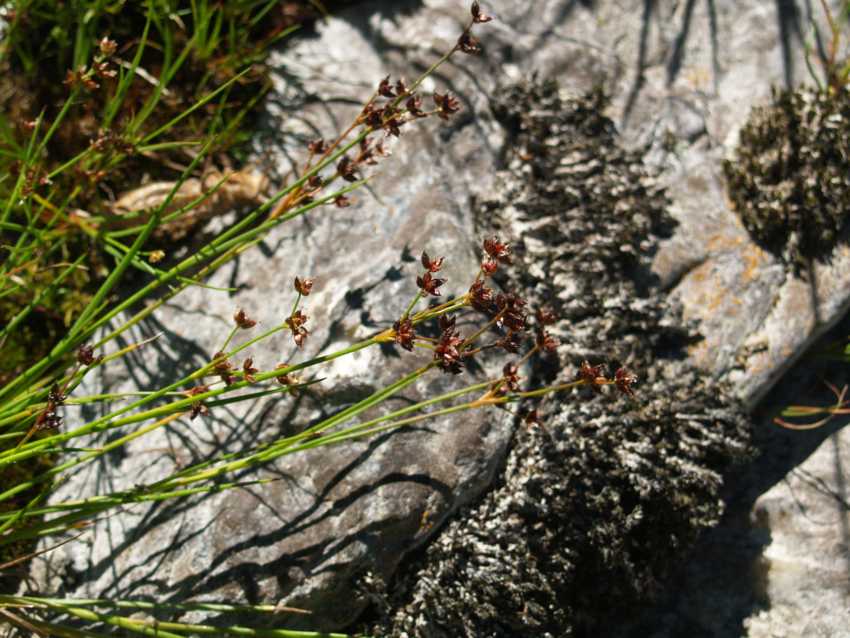
Photo 12 |
and the Common Yellow sedge (Carex viridula subsp. oedocarpa)(Photo 13). | 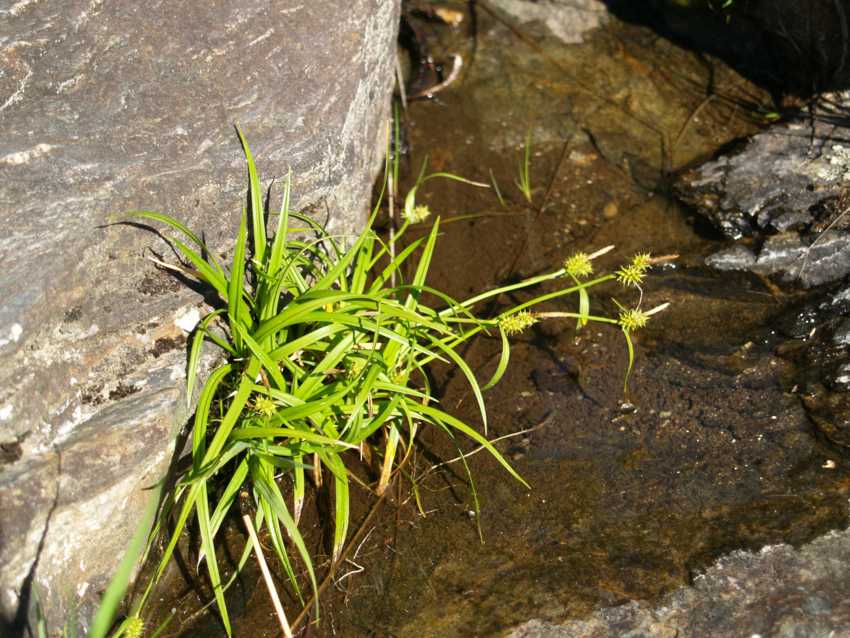
Photo 13 |
|
Above all, we must include the All-seed (Radiola linoides) (Photo 14) . Several days later,
I was exploring the banks of the Mimente for other specimens of the Summer Lady's Tresses, and
became very interested to find, for the very first time, one of the smallest flowers in all Europe,
perched on the rocks several centimetres from the water's edge.
Imagine my surprise when I was checking through the photos of Summer Lady's Tresses I had taken over the past few years. There, just beside these orchids, were some beautiful colonies of All-seed, previously overlooked! There are none so blind as those who cannot see. |
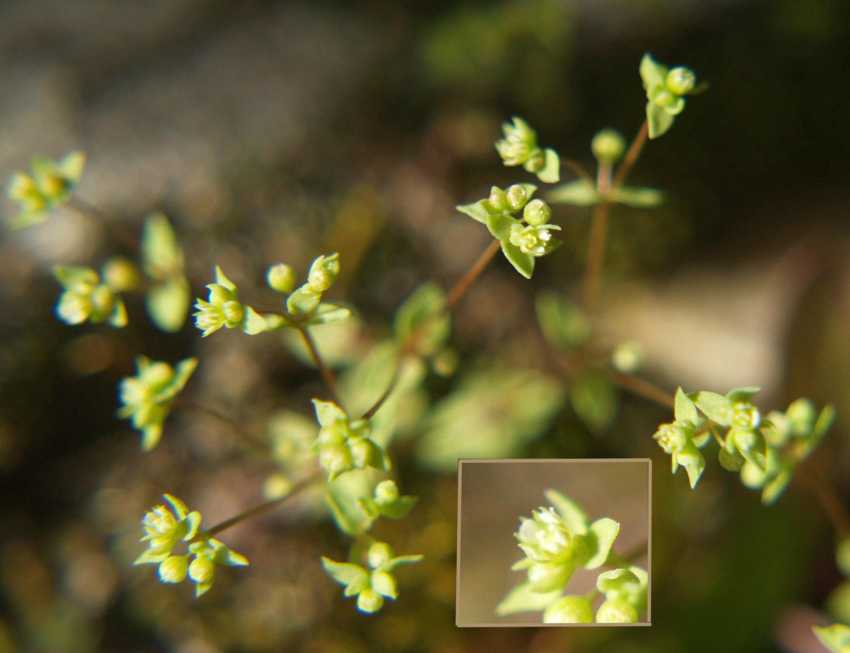
Photo 14 |
|
In short, all these indicator species belong to a group that are very rare, or extinct in England.
They are pathetic little plants, on the margins of society, which are to be found in patches of disturbed ground,
often puddles in winter, muddy in spring, well trodden-down by livestock throughout the year,
often beside gates and farmyard paths. In 2010, all has become very tidy, the paths are covered in tarmac,
the small herds of yesteryear have disappeared.
Fortunately, in France, along basins of the Tarn and Mimente, the river banks fit the bill, because the Summer Lady's Tresses and its companions are in a flood zone, and under a torrent of water almost every year. As for the Summer Lady's Tresses itself, there was once a famous colony in England, just 2 miles from my home in the New Forest. But in 1850, the bogs were drained, with the aim of 'improving' the pasture. It took a century for them to completely disappear, but their end was inevitable. One year ago, with the benefit of EU money, the canal (Warwickslade Cutting) was filled in, and the original curves of the river re-instated. Will the Lady's Tresses return? Who knows? For me, I now have the good luck to live just 2 miles from a colony in France, and my English friends may drool with envy. |